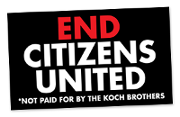Biblio
Filters: First Letter Of Last Name is M [Clear All Filters]
(1996). Mental Disorder, Work Disability, and the Law.
"Many mental health advocates and experts note the parallel between useful accommodations for people with psychiatric disabilities, such as workplace flexibility and an individualized approach to management, and good management practices that would benefit any worker. They assert that adjustments of job demands to the temperament, sensitivities, strengths, weaknesses, and preferences of a valued employee occur frequently." (p. 268)
(2008). The Management Gurus: lessons from the best management books of all time.
(, Ed.).
"Finally, the traditional hierarchy—the pyramid structure of almost all organizations—has to be discarded. The traditional top-down method of leadership is wasteful and ineffective because a company's need to innovate continues to conflict with shared assumptions about loyalty and unquestioning obedience. This situation must change." (p. 269)
(2000). Life Strategies : Doing What Works, Doing What Matters.
"Remember, I said earlier the number-one need in all people is acceptance. The number-one fear in all people is rejection." (p. 100)
(1999). Learning Debian GNU/Linux.
(2009). JBoss at Work: A Practical Guide.
(1996). Java With Borland C++.
(2002). Java Web Services Unleashed.
(2005). International management: cross-cultural dimensions.
"Middle management often feels threatened by lower level autonomy." (p. 132)
(2008). Innovate Like Edison: The Five-Step System for Breakthrough Business Success.
"The most innovative contemporary workplaces welcome humor and play and the most bureaucratic ones invariably take themselves too seriously. Overseriousness is a warning sign of mediocrity and bureaucratic thinking." (p. 124)
(1997). Industrial Strength Java.
(1977). Improving Productivity and the Quality of Work Life.
Report on a workplace study authored in 1972:
"The man doing the job is the one to say what time is likely to be wasted. Also, the man who not is pressed, rushed into missing breakfast, or subjected to a guilty conscience by being late is far more likely to really contribute to a team's performance.
Finally, it says, 'Flexible working is something that will inevitably be adopted in the future, and management have the choice of leading towards a situation which they have helped create, or being compelled to accept something not to their liking.'"
"The man doing the job is the one to say what time is likely to be wasted. Also, the man who not is pressed, rushed into missing breakfast, or subjected to a guilty conscience by being late is far more likely to really contribute to a team's performance.
Finally, it says, 'Flexible working is something that will inevitably be adopted in the future, and management have the choice of leading towards a situation which they have helped create, or being compelled to accept something not to their liking.'"
(1998). Images of Organization: The Executive Edition.
"The groupthink phenomenon has been reproduced in thousands of decision-making situations in organizations of all kinds. It may seem overly dramatic to describe the phenomenon as reflecting a kind of psychic prison. Many people would prefer to describe it through the culture metaphor, seeing the pathologies described in all the above examples as the product of particular cultural beliefs and norms. But there is great merit in recognizing the prison-like qualities of culture." (p. 186)
(1986). Images of Organization.
"History may well judge that Taylor came before his time. His principles of scientific management make superb sense for organizing production when robots rather than human beings are the main productive force, when organizations can truly become machines." (p. 33)
(1999). If work makes people with mental illness sick, what do unemployment, poverty, and social isolation cause?.
Psychiatric Rehabilitation Journal. 23(2), Abstract
"In fact, the change from the role of patient or client to a new role as worker in society is fragile at best. The journey to employment requires a more sensitive approach from all involved individuals (the worker, the professionals, family, and friends) to the extent that everyone can successfully leverage the potential and ability of the worker with an appreciation of the limitations that are part of the illness."
(1983). FORTH fundamentals.
(1994). First Things First.
"Arnold Toynbee, the great historian, said that all of history can be written in a simple little formula—challenge, response. The challenge is created by the environment, and then the individual, the institution, the society comes up with a response. Then there's another challenge, another response. The formula is constantly being repeated.
The problem is that these responses become codified. They get set in cement. They become a part of the very way we think and the way we perform. They may be good procedures, good practices. But when we're faced with a new challenge the old practices no longer apply. They become obsolete. We're out in the wilderness trying to navigate with a road map." (p. 53)
The problem is that these responses become codified. They get set in cement. They become a part of the very way we think and the way we perform. They may be good procedures, good practices. But when we're faced with a new challenge the old practices no longer apply. They become obsolete. We're out in the wilderness trying to navigate with a road map." (p. 53)
(1997). Firing back: power strategies for cutting the best deal when you're about to lose your job.
"...you may already be convinced that your co-workers, likable and helpful souls as they may have been during good times, are not really part of your protective, extended family. When the bad times came, many of them disappointed you. Either they weren't there for you or they weren't able to solve your problems. If they felt threatened themselves, they were running for cover. Even if they thought they were safe, they were probably showing you a side of themselves you hadn't seen before: a cold, distant, suspicious, or cruel side. But what made you think you were all part of a great big family?" (p. 207)
(C)2014 CC-BY-NC 3.0, workcreatively.org











 ]
]